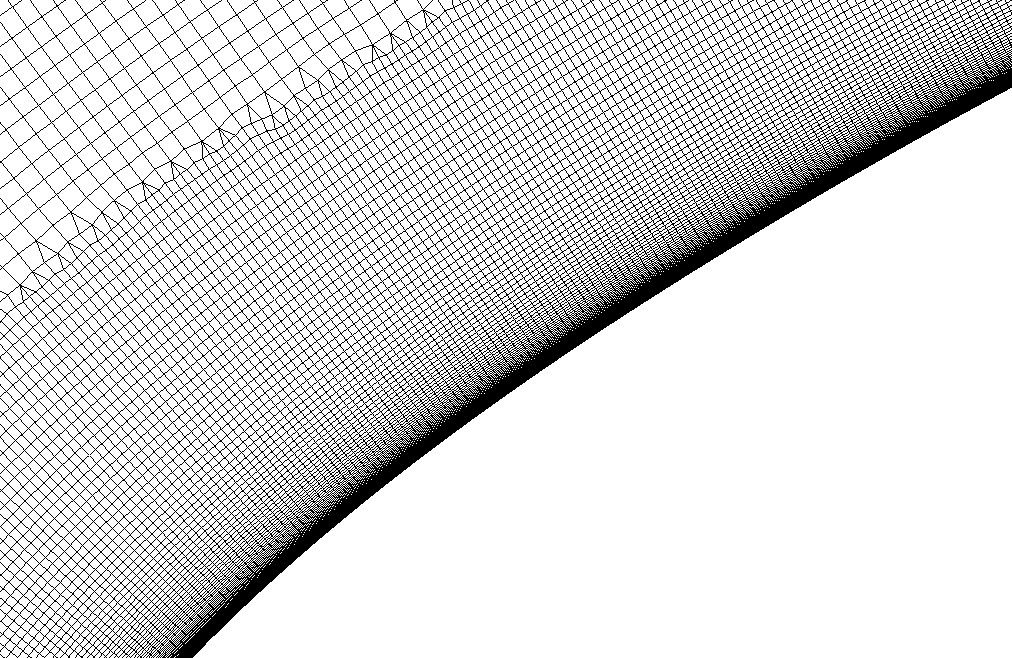How to use Inflation Layers for Boundary Layer Mesh

Inflation layers are a commonly used technique to capture the boundary layer accurately in CFD simulations. Here are some general tips for setting inflation layers: ( full table of symbols can be found at the bottom of the page)
Calculate the First Layer Height:
The first layer height is an important value when using inflation layers, it refers to the height or thickness of the first mesh cell in the inflation layer that is adjacent to the surface of the object. This value is important because it determines the level of resolution in the boundary layer region. If the first layer height is too large, the inflation layer will not capture the velocity gradients near the surface accurately, resulting in an inaccurate prediction of the flow properties in the boundary layer region. On the other hand, if the first layer height is too small, the number of mesh cells required will increase significantly, leading to an increase in computational cost.
Thus, the first layer height should be set to a value that is small enough to capture the velocity gradients accurately but large enough to keep the number of mesh cells reasonable. The appropriate value of the first layer height depends on the problem being studied and the desired level of accuracy.
To calculate the value for the first layer height we rearrange the formula for \( y^+ \) to give:
\[ y_1 = \frac{y^+ \mu}{U_{\tau} \rho} \]
Friction velocity \( U_\tau \) can be calculated from the following equation:
\[ U_{\tau} = \sqrt{ \frac{\tau_w}{\rho}} \]
where the wall shear stress \( \tau_w \) can be calculated from the skin friction coefficient \( C_f \) given by
\[ \tau_w = \frac{1}{2} C_f \rho U^2 \]
\[ C_f = [2 \log_{10} (Re_x) - 0.65]^{-2.3} \]
And the Reynolds number for the charactersitic length \( Re_x \) can be calculated using:
\[ Re_x = \frac{\rho U L}{\mu} \]
Growth Rate and the Number of Layers
The growth rate of the inflation layer determines how quickly the thickness of the layer increases as it moves away from the wall. The growth rate and number of layers in the inflation layers should be chosen based on the thickness of the boundary layer in the region of interest, this can be estimated using empirical correlations or by performing a preliminary simulation with a coarse mesh.
The growth rate and number of layers needs to be chosen such that the mesh is fine enough to accurately capture the boundary layer but not so fine that the computational cost becomes prohibitively expensive. A commonly used growth rate is 1.2, which means that the size of each successive layer increases by a factor of 1.2. From this the number of layers required can be estimated using the following formula, where N is the number of layers
\[ \delta = y_1 \frac{1-g^{N+1}}{1-g} \]
The boundary layer thickness can be calculated using this formula from Schlichting:
\[ \delta = 0.14 \frac{\nu}{U_\infty} \frac{Re_x}{ln Re_x} G (ln Re_x) \]
Where G is equal to 1.5 based on the formula from Schlichtings Boundary Layer Theory
Summary
In summary, setting inflation layers to capture the boundary layer accurately involves determining the size of the boundary layer in order to define the inflation layer thickness, first layer height and the growth rate. The values can then be input into the mesh generator to generate the mesh and check the meshes quality. It is important to perform a mesh study or a sensitivity study to determine the effect of changing various parameters such as the growth rate on the simulation results. Varying different parameter and then comparing the simulation results can help identify the optimal values for the gien problem.
List of Symbols
\( y_1 =\) First Layer Height
\( y^+ =\) Y plus
\( \delta = \) Boundary Layer Thickness
\( \mu = \) Dynamic Viscosity
\( \nu = \) Kinematic Viscosity
\( U_{\tau} = \) Friction Velocity
\( U_{\infty} = \) Freestream Velocity
\( \tau_w = \) Wall Shear Stress
\( \rho = \) Density
\( C_f = \) Skin Friction Coefficient
\( L = \) Characteristic Length
\( Re = \) Reynolds Number
